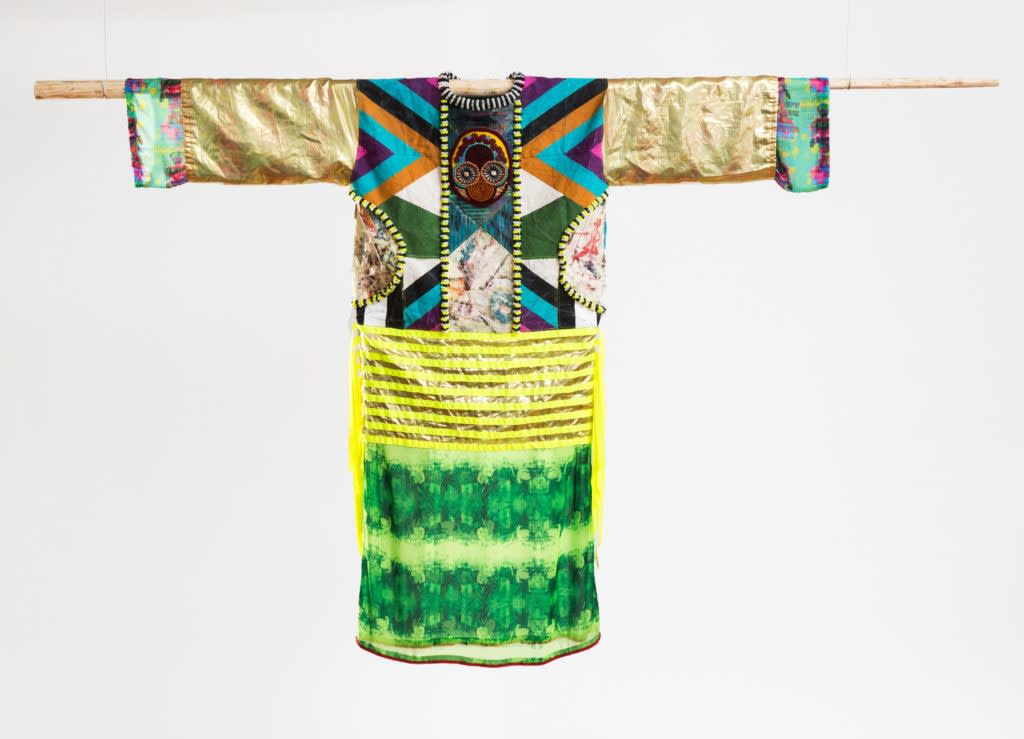The Whitney Biennial is officially open to the public, and like many of the sprawling biennials and triennials that have proliferated worldwide, it’s difficult to know where to start. This year’s iteration is organized by two veterans of the Whitney’s staff, Rujeko Hockley and Jane Panetta, who went to great pains to avoid shaping the exhibition around a particular theme.
The self-described “conceptually sprawling survey” does emphasize the presence of the artist’s hand—both literally, in the self-portraits of photographer Paul Mpagi Sepuya, whose hand is sometimes the only body part visible in his fragmented photographs—and figuratively, as in the work of Jeffrey Gibson, whose hand-crafted sculptural works embody what Hockley and Panetta describe as “less slick and more idiosyncratic.”
All told, the lineup of more than 70 artists is extremely wide-ranging and younger than ever. And as at any biennial, collectors are looking as closely as curators and artists, seeking to divine rising stars. To help guide you through, we’ve selected nine artists who appear to be on the cusp of a breakthrough—whether they are relative unknowns poised to become critical darlings or more established names about to take an even bigger stage.
Our picks include both the oldest artist in the group, 84-year old Chicago-based artist Diane Simpson (who has three galleries representing her work in New York, Chicago, and London), and 28-year-old Ilana Harris-Babou, who does not yet have formal gallery representation. We then delved into their markets to provide a buyer’s guide to their most sought-after works.
Based in: Brooklyn, New York
JEFFREY GIBSON

Gallery affiliation: Roberts Projects (Los Angeles), Kavi Gupta (Chicago), and Sikkema Jenkins & Co. (New York)
Best known for: Mixing materials rooted in Native American and Indigenous traditions with punk, pop, and other sub-cultural histories to address the way in which these voices have been excluded from the canons of modernism and contemporary popular culture. One is equally likely to encounter powwow regalia and elements of Modernist geometric abstraction in his work, which takes the form of sculpture, painting, performance, and video.
Most wanted: Collectors are most interested in his punching bags and paintings, while his garments are most sought-after by institutions.
Price points: Gibson’s glass bead-laden panels run from $30,000 to $220,000; garments are priced from $60,000. The artist’s top auction price, for a punching bag entitled White Power (2013), is $233,000, set at Christie’s New York in November 2015.
Up next: Gibson has a small show at the New Museum on view until June 9—and a very busy year ahead after that. Beginning this summer, he has solo shows at the Madison Museum of Contemporary Art (June 8–September 15); the Blanton Museum of Art at the University of Texas at Austin (July 14–September 29); and the Esker Foundation in Calgary, Canada (September 28–December 22). Come spring 2020, he will also have a solo show at the Brooklyn Museum.

